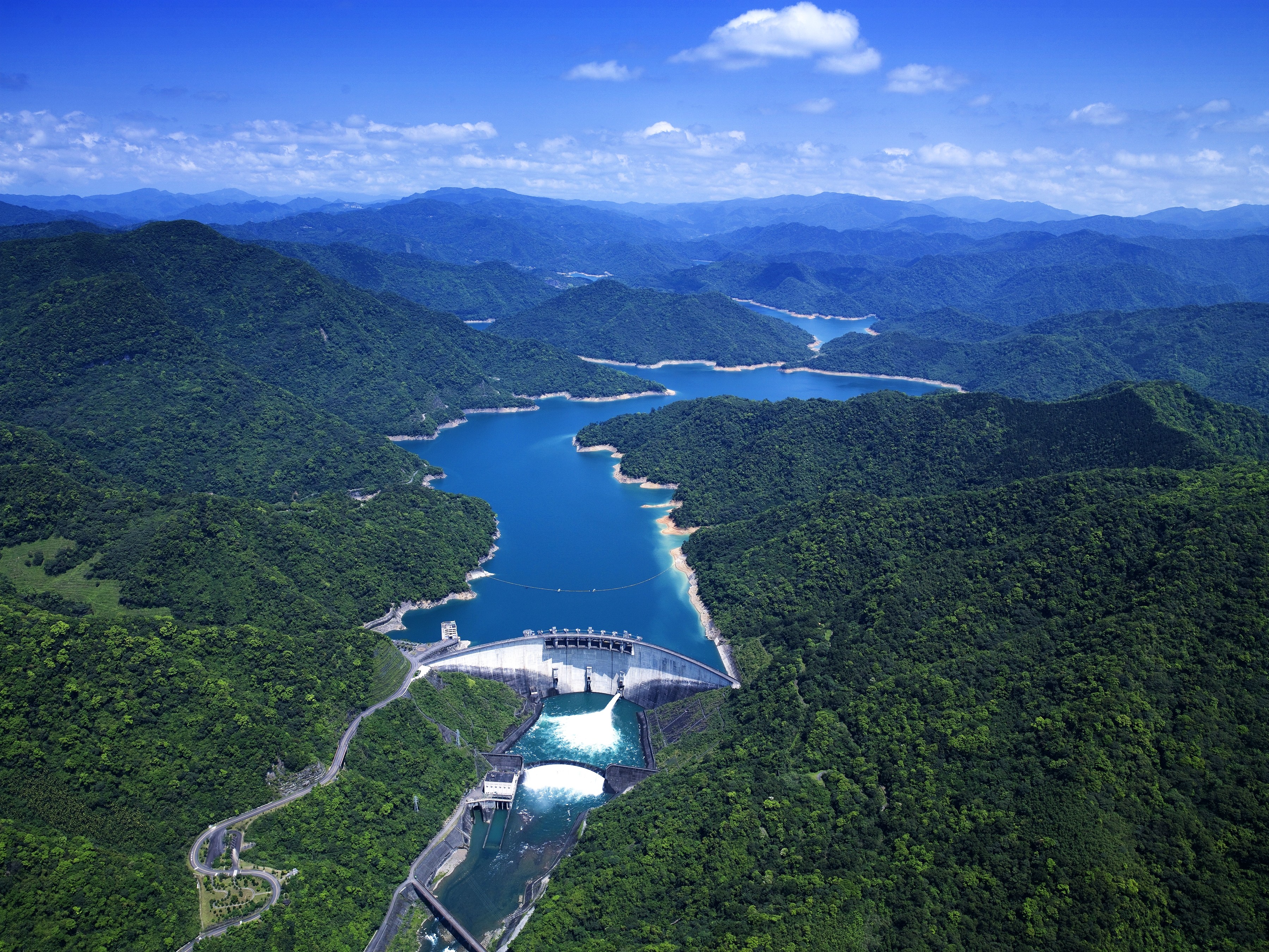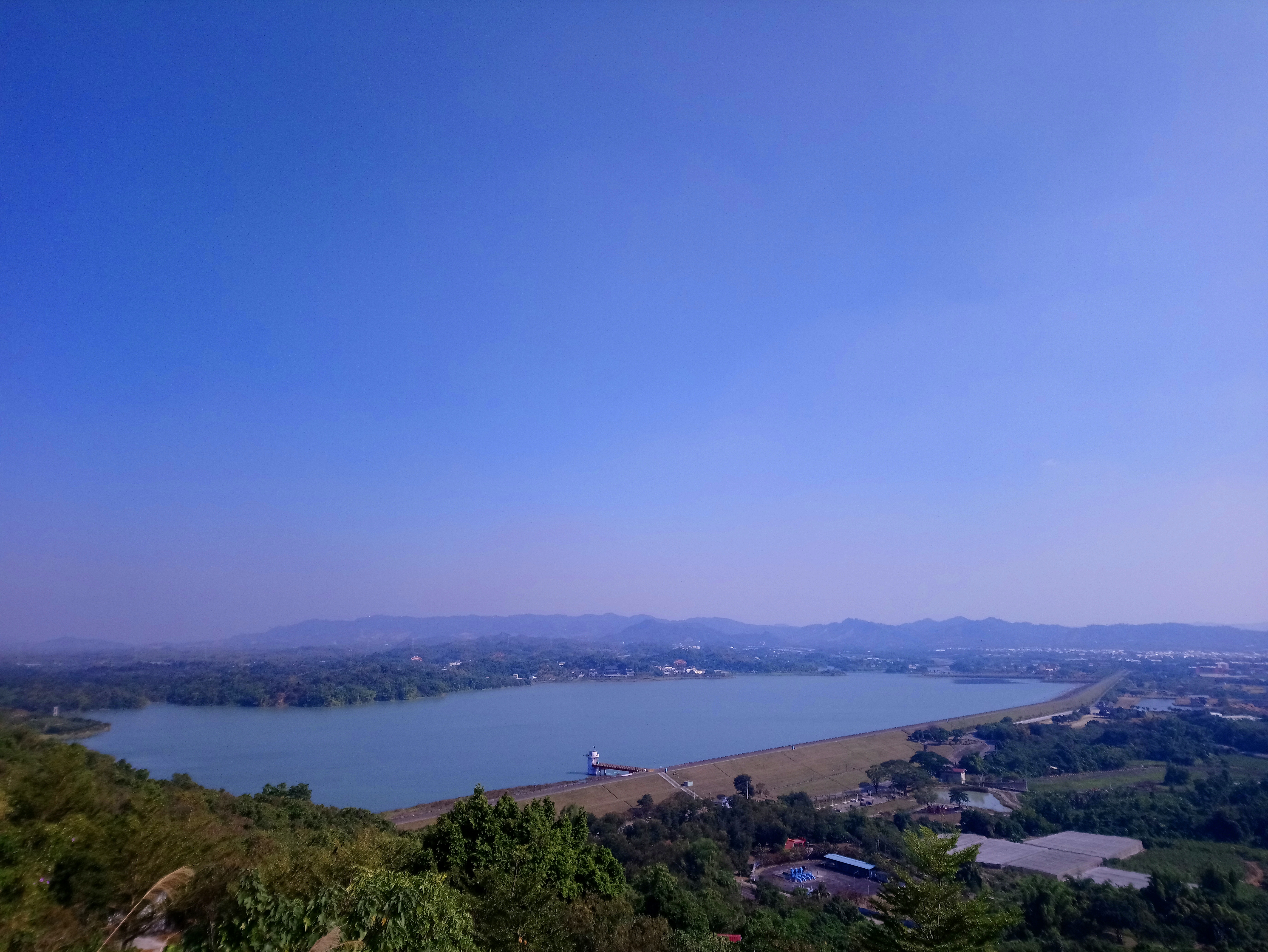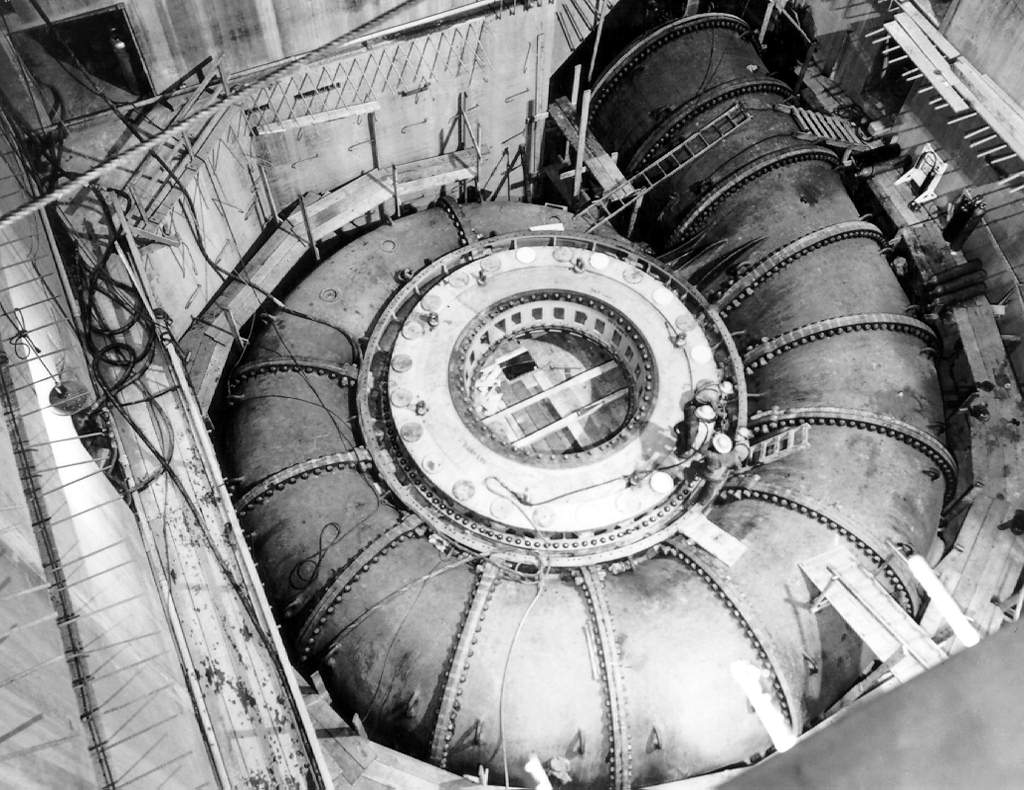|
Feicui Dam
Feicui Dam () is a double curvature concrete arch dam on the Beishi River in Shiding District, New Taipei, Taiwan, forming Feicui Reservoir (). The dam is located in Shiding District, New Taipei City, and is usually misunderstood as the principal water source for the Taipei metropolitan area, Greater Taipei area (In fact, the principal water source for the Greater Taipei area is Nanshi River. Feicui Dam, by contrast, is the water source in reserve). The name of the dam and reservoir translates as "emerald lake", in reference to the pure quality of the water. The area is managed by the Taipei Feicui Reservoir Administration. Public access is heavily restricted in order to protect water quality, which is among the highest of Taiwan's reservoirs. History The dam was proposed in the 1970s during a period of severe drought in northern Taiwan. The reservoir site was located on the Beishi River, which joins with the Nanshi River to form the Xindian River which flows through New Taipei Ci ... [...More Info...] [...Related Items...] OR: [Wikipedia] [Google] [Baidu] |
Shiding District
Shiding District () is a rural district in southern New Taipei City, Taiwan. History Shiding used to be a thriving town during the Qing Dynasty due to its geographically favorable condition as a resting place on the way to Yilan and its coal mine resources and tea trading. Shiding was a rural township of Taipei County until the upgrade of the county to become the New Taipei municipality on 25 December 2010, Shiding became a district. Geography *Area: 144.35 km2 *Population: 7,251 people (March 2023) Education * Huafan University * New Taipei Municipal ShiDing High School Tourist attractions * Huafan Culture Gallery * Lumantan Forest Bath * Putty Painting House * Shiding Danlan Culture Hall * Shiding East Street * Shiding West Street Transportation The district is accessible by bus from Jingmei Station of Taipei Metro Taipei Metro (also known as Taipei Mass Rapid Transit (MRT) and branded as Metro Taipei) is a rapid transit system operated by the Taipei Rapi ... [...More Info...] [...Related Items...] OR: [Wikipedia] [Google] [Baidu] |
Acre Foot
The acre-foot is a non- SI unit of volume equal to about commonly used in the United States in reference to large-scale water resources, such as reservoirs, aqueducts, canals, sewer flow capacity, irrigation water, and river flows. An acre-foot equals approximately an eight-lane swimming pool, long, wide and deep. Definitions As the name suggests, an acre-foot is defined as the volume of one acre of surface area to a depth of one foot. Since an acre is defined as a chain by a furlong (i.e. ), an acre-foot is . There have been two definitions of the acre-foot (differing by about 0.0006%), using either the international foot (0.3048 m) or a U.S. survey foot (exactly meters since 1893). On December 31, 2022, the National Institute of Standards and Technology, the National Geodetic Survey, and the United States Department of Commerce deprecated use of the US survey foot and recommended conversion to either the meter or the international foot. Application As a rule o ... [...More Info...] [...Related Items...] OR: [Wikipedia] [Google] [Baidu] |
1987 Establishments In Taiwan
Events January * January 1 – Bolivia reintroduces the Boliviano currency. * January 2 – Chadian–Libyan conflict – Battle of Fada: The Chadian army destroys a Libyan armoured brigade. * January 3 – Afghan leader Mohammad Najibullah says that Afghanistan's 1978 Communist revolution is "not reversible," and that any opposition parties will have to align with Communist goals. * January 4 – ** 1987 Maryland train collision: An Amtrak train en route from Washington, D.C. to Boston collides with Conrail engines at Chase, Maryland, United States, killing 16 people. ** Televangelist Oral Roberts announces to his viewers that unless they donate $8 million to his ministry by March 31, God will "call imhome." * January 15 – Hu Yaobang, General Secretary of the Chinese Communist Party, is forced into retirement by political conservatives. * January 16 – León Febres Cordero, president of Ecuador, is kidnapped for 11 hours by followers of imprisoned general Fra ... [...More Info...] [...Related Items...] OR: [Wikipedia] [Google] [Baidu] |
Electricity Sector In Taiwan
The electricity sector in Taiwan ranges from generation, transmission, distribution and sales of electricity, covering Taiwan island and its offshore islands. Regulator Electricity sector in Taiwan is regulated by its state-owned electric power utility company Taiwan Power Company (Taipower), established on 1 May 1946. Independent power producers After the liberalization of Taiwan electricity market in January 1995, there are total of 9 independent power producers in Taiwan up to date, which are: * Ever Power IPP Co., Ltd. * Ho-Ping Power Company * Hsin Tao Power Corporation * Mai-Liao Power Corporation * Star Energy Power Corporation * Sun Ba Power Corporation * Chiahui Power Corporation * Kuo Kuang Power Corporation * Hsing Yuan Power Corporation (Star Buck Power Corporation) Generation Installed capacity At the end of 2016, the total installed capacity of electricity in Taiwan was 49.06 GW, which came from coal-based thermal (34.73%), gas-based thermal (32.3 ... [...More Info...] [...Related Items...] OR: [Wikipedia] [Google] [Baidu] |
List Of Power Stations In Taiwan
This page is a list of power stations in the Republic of China (Taiwan) that are publicly or privately owned. Non-renewable power stations are those that run on coal, fuel oils, nuclear power, and natural gas, while renewable power stations run on fuel sources such as biomass, geothermal heat, moving water, solar rays, tides, waves and the wind. By the end of 2011, Taiwan had installed 41,401 MW of generating capacity across all types of power station.http://www.taipower.com.tw/TaipowerWeb//upload/files/4/2012e-all.pdf Among the lists of largest power stations, Taichung Power Plant is the fourth largest coal-fired power station in the world. Non-renewable Coal Diesel Fuel oil Mixed Natural gas Nuclear Renewable Hydroelectric Geothermal Former power plants Figures Nuclear power plants File:Chin-shan Nuclear Power Plant-canal and containment building-P1020609.JPG, Jinshan Nuclear Power Plant File:TaiwanNPP2 01.JPG, Kuosheng Nuclea ... [...More Info...] [...Related Items...] OR: [Wikipedia] [Google] [Baidu] |
List Of Dams And Reservoirs In Taiwan
This is a partial listing of dams and reservoirs in Taiwan (Republic of China). List of dams and reservoirs See also * List of power stations in Taiwan References * Reservoirs, dams and weirs of Taiwan (Taiwan Water Resources Agency) {{DEFAULTSORT:Dams and reservoirs in Taiwan Dams in Taiwan, Reservoirs in Taiwan, Lists of dams and reservoirs by country, Taiwan Lists of buildings and structures in Taiwan, Dams Lists of landforms of Taiwan, Dams ... [...More Info...] [...Related Items...] OR: [Wikipedia] [Google] [Baidu] |
Provincial Highway 9 (Taiwan)
Provincial Highway 9 is an important highway across eastern Taiwan from Taipei City to Fangshan, Pingtung, Pingtung County. This provincial highway, at 453.851 km long, is the second-longest provincial highway in Taiwan and passes the regions of Taipei City, New Taipei City, Yilan County, Taiwan, Yilan County, Hualien County, Taitung County and Pingtung County. Route Description The highway begins in front of the Executive Yuan in downtown Taipei. It continues along Zhongshan Road (Taipei), Zhongshan South Road (中山南路) and Roosevelt Road (Taipei), Roosevelt Road (羅斯福路) until it reaches Xindian District, Xindian, New Taipei. From there the highway follows Beixin Road (北新路) and later becomes Bei-Yi Highway (北宜公路). The highway passes through mountainous regions and enters Shiding District, Shiding and Pinglin District, Pinglin in New Taipei City before reaching Yilan County. In Yilan County, the highway finally leaves the mountainous region and ent ... [...More Info...] [...Related Items...] OR: [Wikipedia] [Google] [Baidu] |
Radial Gate
The Tainter gate is a type of radial arm floodgate used in dams and canal locks to control water flow. It is named for its inventor, the Wisconsin structural engineer Jeremiah Burnham Tainter. Tainter, an employee of the lumber firm Knapp, Stout and Co., invented the gate in 1886 for use on the company's dam that forms Lake Menomin in the United States. Description A side view of a Tainter gate resembles a slice of pie with the curved part of the piece facing the source or upper pool of water and the tip pointing toward the destination or lower pool. The curved face or skinplate of the gate takes the form of a wedge section of cylinder. The straight sides of the pie shape, the trunnion arms, extend back from each end of the cylinder section and meet at a trunnion which serves as a pivot point when the gate rotates. Principle Pressure forces on a submerged body act perpendicular to the body's surface. The design of the Tainter gate results in every pressure force acting t ... [...More Info...] [...Related Items...] OR: [Wikipedia] [Google] [Baidu] |
Kilowatt Hour
A kilowatt-hour ( unit symbol: kW⋅h or kW h; commonly written as kWh) is a non-SI unit of energy equal to 3.6 megajoules (MJ) in SI units, which is the energy delivered by one kilowatt of power for one hour. Kilowatt-hours are a common billing unit for electrical energy supplied by electric utilities. Metric prefixes are used for multiples and submultiples of the basic unit, the watt-hour (3.6 kJ). Definition The kilowatt-hour is a composite unit of energy equal to one kilowatt (kW) multiplied by (i.e., sustained for) one hour. The International System of Units (SI) unit of energy meanwhile is the joule (symbol J). Because a watt is by definition one joule per second, and because there are 3,600 seconds in an hour, one kWh equals 3,600 kilojoules or 3.6 MJ."Half-high dots or spaces are used to express a derived unit formed from two or more other units by multiplication.", Barry N. Taylor. (2001 ed.''The International System of Units.'' (Special publication 33 ... [...More Info...] [...Related Items...] OR: [Wikipedia] [Google] [Baidu] |
Megawatt
The watt (symbol: W) is the unit of Power (physics), power or radiant flux in the International System of Units (SI), equal to 1 joule per second or 1 kg⋅m2⋅s−3. It is used to quantification (science), quantify the rate of Work (physics), energy transfer. The watt is named in honor of James Watt (1736–1819), an 18th-century Scottish people, Scottish inventor, mechanical engineer, and chemist who improved the Newcomen engine with his own Watt steam engine, steam engine in 1776, which became fundamental for the Industrial Revolution. Overview When an object's velocity is held constant at one meter per second against a constant opposing force of one Newton (unit), newton, the rate at which Work (physics), work is done is one watt. \mathrm. In terms of electromagnetism, one watt is the rate at which electrical work is performed when a current of one ampere (A) flows across an electrical potential difference of one volt (V), meaning the watt is equivalent to the vo ... [...More Info...] [...Related Items...] OR: [Wikipedia] [Google] [Baidu] |
Francis Turbine
The Francis turbine is a type of water turbine. It is an inward-flow reaction turbine that combines radial and axial flow concepts. Francis turbines are the most common water turbine in use today, and can achieve over 95% efficiency. The process of arriving at the modern Francis runner design took from 1848 to approximately 1920. It became known as the Francis turbine around 1920, being named after British-American engineer James B. Francis who in 1848 created a new turbine design. Francis turbines are primarily used for producing electricity. The power output of the electric generators generally ranges from just a few kilowatts up to 1000 MW, though mini-hydro installations may be lower. The best performance is seen when the head height is between . Penstock diameters are between . The speeds of different turbine units range from 70 to 1000 rpm. A wicket gate around the outside of the turbine's rotating runner controls the rate of water flow through the turbine ... [...More Info...] [...Related Items...] OR: [Wikipedia] [Google] [Baidu] |






